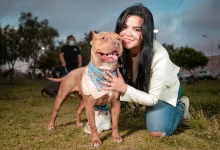
Welcome to an exploration of the captivating realm where education intertwines with the fascinating world of amphibians. Beyond being mere pets, amphibians serve as engaging companions that impart invaluable lessons to students in educational settings. Join us on this journey as we delve into the educational benefits, the intricacies of caring for these creatures, overcoming challenges, and amplifying the impact of amphibians in the realm of learning.
Fascinating World of Amphibians
The Allure of Amphibians: A Brief Overview
Amphibians, with their diverse species ranging from tree frogs to salamanders, captivate the imagination. Their vibrant colors, unique adaptations, and agile movements make them compelling subjects for study. As educational companions, they offer students a direct connection to biodiversity, bringing the textbook to life within the classroom.
Educational Benefits: Beyond the Classroom Walls
The educational advantages of incorporating amphibians extend far beyond traditional classroom boundaries. Imagine students actively participating in feeding sessions or witnessing tadpoles undergo metamorphosis. This hands-on engagement fosters environmental awareness, ignites curiosity, and provides tangible learning experiences that transcend theoretical knowledge.
Choosing the Right Amphibian: A Guide for Educational Institutions
Selecting the right amphibian species is crucial for a successful educational program. Consider the resilient fire-bellied toad, known for its adaptability and ease of care. This section guides educators through the decision-making process, emphasizing the importance of aligning the chosen species with the educational goals and capabilities of the institution.
Amphibians in the Classroom: Setting Up a Habitat
Creating a habitat that mirrors the natural environment of amphibians is key to their well-being and educational value. Picture a vivarium where students can observe the interconnectedness of plants, water, and amphibians. We’ll explore the steps to establish a safe, enriching environment, ensuring both the educational and physical needs of the amphibians are met.
Legal and Ethical Considerations: Ensuring Responsible Pet Ownership
Responsible ownership of amphibians in educational settings involves adhering to legal and ethical standards. Beyond creating a safe environment, this section emphasizes the importance of instilling values of responsibility and empathy in students. Complying with regulations ensures the ethical treatment of amphibians and a positive educational experience.
Amphibians and Learning:
Now, let’s dive into the symbiotic relationship between amphibians and educational development, exploring how these fascinating creatures contribute to enhanced learning experiences.
Observational Learning: A Window into Amphibian Behavior
Amphibians provide a living canvas for observational learning. Students huddled around a vivarium can witness intricate behaviors, from feeding patterns to mating rituals. This direct observation becomes a window into the world of biology, ecology, and animal behavior, fostering a deeper understanding of the natural world.
Life Cycle Lessons: Amphibians as Living Science Textbooks
An amphibian’s life cycle is a dynamic, living science textbook. Students can witness the entire process, from eggs to tadpoles to adult frogs. This tangible experience offers a comprehensive biology lesson, making complex concepts more accessible and engaging.
Environmental Stewardship: Fostering a Sense of Responsibility
Caring for amphibians goes beyond textbook knowledge; it instills values of environmental stewardship. Through responsible care practices, students develop a sense of responsibility towards the environment. Amphibians become ambassadors for conservation, nurturing a generation committed to preserving our planet.
Interdisciplinary Connections: Amphibians Across Subjects
Amphibians seamlessly integrate into various subjects, promoting interdisciplinary learning. Imagine a biology class collaborating with art as students sketch amphibians. This cross-disciplinary approach enhances critical thinking, creativity, and a holistic understanding of the subjects.
Student Engagement: Amphibians as Classroom Ambassadors
With their unique charm, amphibians become classroom ambassadors, sparking curiosity and engagement. Imagine a classroom where students eagerly anticipate amphibian-related activities, transforming mundane lessons into exciting adventures. Amphibians become catalysts for a genuine passion for learning.
Amphibian Care and Welfare:
Ensuring the well-being of our amphibian companions is paramount. Let’s explore the essential aspects of responsible care within educational settings.
Nutritional Needs: Crafting a Balanced Diet
Amphibians have specific nutritional needs that must be met for their health. Educators become caretakers, ensuring their amphibian charges enjoy a balanced and varied diet. This section provides insights into crafting nutritionally rich meals to promote vitality.
Health Monitoring: Recognizing Signs of Distress
Regular health monitoring is essential to spot signs of distress early. Educators equipped with knowledge can identify abnormalities in behavior or appearance, ensuring timely intervention and promoting the overall well-being of the amphibians in their care.
Educational Programming: Integrating Amphibian Care into Curriculum
Amphibian care routines become an integral part of the curriculum. This hands-on approach not only teaches responsible pet ownership but also enhances the educational experience. Students actively participate in the care of their amphibian companions, creating a sense of ownership and connection.
Environmental Enrichment: Creating Stimulating Habitats
A well-enriched habitat is vital for promoting natural behaviors in amphibians. Students actively contribute to creating environments that mimic nature, offering mental stimulation and physical exercise. This section explores strategies for designing habitats that enhance the lives of educational amphibian companions.
Vet Partnerships: Ensuring Professional Amphibian Care
Collaboration with veterinarians ensures the health and longevity of our amphibian companions. Educators become advocates for their well-being, fostering a sense of responsibility among students. Regular veterinary check-ups and consultations contribute to a holistic approach to amphibian care in educational settings.
Overcoming Challenges: Fascinating World of Amphibians
While the journey with amphibians is rewarding, challenges may arise. Let’s navigate through common hurdles, ensuring a harmonious coexistence in educational settings.
Budget Considerations: Maximizing Resources
Educators become budget-savvy as they navigate the financial aspects of introducing amphibians. This section explores innovative solutions and cost-effective strategies to ensure a rich educational experience within budget constraints.
Allergen Concerns: Addressing Potential Sensitivities
Addressing allergen concerns becomes a priority, ensuring a safe environment for all students and staff. Strategies for managing sensitivities are explored, creating an inclusive educational space where everyone can participate without concerns.
Regulatory Compliance: Navigating Legal Requirements
Educators follow a roadmap to navigate legal requirements, ensuring compliance with regulations governing the keeping of amphibians in educational facilities. A well-informed approach establishes a secure foundation for educational amphibian programs, preventing potential legal complications.
Educator Training: Building Amphibian Care Competency
Training educators in amphibian care becomes integral to the success of educational programs. Imagine teachers confidently guiding students through care routines, fostering a culture of expertise within the educational community. This section delves into the importance of ongoing training and professional development.
Parental Engagement: Fostering Supportive Partnerships
Engaging parents in the journey ensures a supportive network.
Picture a community where parents actively participate, enhancing the success of amphibian-based educational programs. Strategies for involving parents in the educational process and addressing potential concerns are explored.
Amplifying Educational Impact:
Now, let’s uncover strategies to maximize the educational impact of amphibians, creating a lasting and positive influence on students’ learning journeys.
Public Showcases: Amphibians in Educational Events
Amphibians take center stage in public events, captivating communities and fostering appreciation. Picture an event where the public interacts with amphibians, bridging the gap between education and community. This section explores the planning and execution of public showcases, creating opportunities for broader community engagement.
Student Projects: Amplifying Learning Through Amphibian-Related Initiatives
Student-led projects become a cornerstone of learning. Imagine classrooms buzzing with creativity as students initiate projects centered around amphibians, blending research and imagination. This section provides guidance on fostering student-led initiatives and incorporating them into the curriculum.
Collaborative Initiatives: Building Partnerships for Amphibian Conservation
Educational institutions become key players in collaborative conservation efforts. Picture a network of schools actively contributing to global amphibian conservation, fostering a sense of responsibility beyond borders. This section explores the potential for partnerships and collaborative initiatives, contributing to the larger cause of amphibian conservation.
Technology Integration: Amphibians in the Digital Age
In the digital age, technology becomes an ally in education. Virtual access to amphibian habitats and research enhances the educational experience, breaking down geographical barriers. This section explores the integration of technology, providing educators with tools to enhance learning through virtual experiences.
Evaluating Success: Metrics for Educational Impact
Establishing metrics ensures the continuous improvement of amphibian-based educational programs. Picture educators analyzing data, refining strategies, and celebrating the impact of their efforts on student learning. This section delves into the importance of evaluation, offering guidance on developing meaningful metrics for assessing educational impact.
Fascinating World of Amphibians
As we conclude this enlightening journey into the educational realm of amphibian companionship, take a moment to reflect on the transformative experiences shared.
Reflecting on the Educational Journey with Amphibians
Consider the growth, excitement, and knowledge gained through this educational journey with amphibians. Reflect on the profound impact these unique creatures have had on students and educators alike. This section encourages a thoughtful reflection on the educational journey, emphasizing the enduring impact of hands-on learning with amphibians.
Looking Ahead: The Future of Amphibian Education
Anticipate a future where amphibians continue to inspire and educate. Picture a world where the lessons learned from these fascinating creatures echo in the minds of students, shaping a generation deeply connected to the wonders of the natural world. This concluding section encourages readers to envision the future of amphibian education, emphasizing the lasting legacy of integrating these captivating creatures into educational settings.
In this collaborative effort between education and nature, we’ve unlocked the potential of amphibians as educational companions. As we continue to integrate them into classrooms, let’s ensure a future where every student experiences the transformative power of learning through these captivating creatures.
FAQs: Fascinating World of Amphibians
Q: Why choose amphibians as educational pets over traditional classroom pets?
- A: Amphibians offer unique learning opportunities by showcasing diverse life cycles, behaviors, and ecological interactions, creating a dynamic educational experience.
Q: What are the key considerations when setting up a habitat for amphibians in an educational setting?
- A: Creating a safe and enriching environment involves mimicking natural conditions, ensuring proper temperature, humidity, and substrate, while also considering the needs of specific amphibian species.
Q: How can educators overcome budget constraints when introducing amphibians into the classroom?
- A: Educators can maximize resources by exploring cost-effective solutions, leveraging community partnerships, and integrating amphibian care into existing curricula for sustainable educational programs.
Q: What role do amphibians play in fostering environmental stewardship among students?
- A: Amphibians serve as ambassadors for conservation, instilling a sense of responsibility and empathy for the environment among students through hands-on care and observation.
Q: How can schools actively contribute to global amphibian conservation efforts?
- A: Schools can engage in collaborative initiatives, leveraging technology, student projects, and public showcases to raise awareness and actively contribute to the conservation of amphibians worldwide.









i love your work 👌